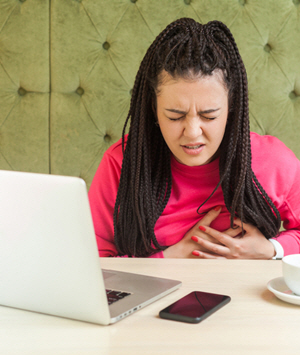You’ve probably noticed that in this world there’s no shortage of things for you to worry about. Just watch the news and you’ll encounter plenty of concerns that may at one point or another affect your life.
Have you ever worried about:
Will they be laying off people at my work soon? How will this affect my finances? Will I be able to continue paying for my house? My car?
Are they recalling yet another medication? Is any member of my family or any of my relatives taking these pills? Have they been harmed by it already?
How many more random shootings will there be in this city’s schools before they really do something about it? Should I even send my children to their school tomorrow?
Notice, though, what all those things have in common. They are very specific worries about very realistic things. On top of that, these worries are usually temporary because there are solutions to them – some easier to implement, some not. But they do exist. In contrast, anxiety is general and diffuse. It’s about unrealistic concerns, like worrying about being laid off because your boss didn’t say good morning to you. Plus, anxiety is anything but temporary – it lingers because there’s never a solution in sight.
But, aren’t worrying and anxiety the same thing?
Not at all. They are two very distinct psychological states. While they both indicate a general sense of concern, they affect your emotional, mental, and physical health very differently.
So, how can you tell if you worry too much and if your worrying may actually be anxiety?
Recognizing the Symptoms of Anxiety
In general, anxiety is severe in comparison to worrying. You can feel anxiety in your whole body – unlike worry, which often just stays in your mind. This means, for example, that anxiety provokes a stronger cardiovascular reaction than worry.
While anxiety is a normal response to danger, nonstop anxiety without real danger is damaging to your health. It interferes with your life and your day-to-day functioning – at work and home.
Consider some of the symptoms of anxiety:
 Physical
Physical
increases heart rate/palpitations (irregular heartbeats, fluttering, throbbing, or pounding in your heart)
chest tightness (shortness of breath, sweating, nausea, pressure or fullness in the center of your chest, radiating chest, arm, or back pain)
rapid breathing (hyperventilation)
trembling (shakiness in your arms, legs, fingers, toes, or whole body)
trouble sleeping/insomnia (tossing and turning, snoring, and daytime sleepiness)
gastrointestinal problems (sudden upset stomach, diarrhea, severe constipation, nausea, or vomiting)
burn out (body wanting to shut down)
headaches (that include weakness, dizziness, or loss of sensation)
feeling weak or tired/fatigue
muscle tension
sweating
dry mouth
blurred vision
 Emotional
Emotional
feeling nervous, restless, or tense (stressed out about work, family, personal life)
scared by something uncertain (having a sense of impending doom, panic, or danger)
irritability
constantly on guard/hypervigilance
Mental
racing mind (unable to stop thinking about anything other than the present worry)
cognitive distortions/warped thinking (all-or-nothing thinking, over-generalization, jumping to conclusions, catastrophizing, emotional reasoning, labeling, personalization)
difficulty controlling the worry
an urge to avoid things that trigger anxiety
finding something to worry about in every situation
trouble concentrating
If the aforementioned symptoms cause you distress and they cannot be explained by illness, medication, or other substances, you may be experiencing anxiety. If you think this may be happening, please contact me for a free consultation to discuss your symptoms.
For my current clients who experience anxiety, we use a variety of techniques to help alleviate or lessen your symptoms, and then work on getting to the root cause of why your anxiety is happening. Some of the techniques that are used are cognitive behavioral therapy, mindfulness, positive guided imagery, EMDR, and lifestyle choices. If you have any questions or would like to learn more about my approach, please contact me.


